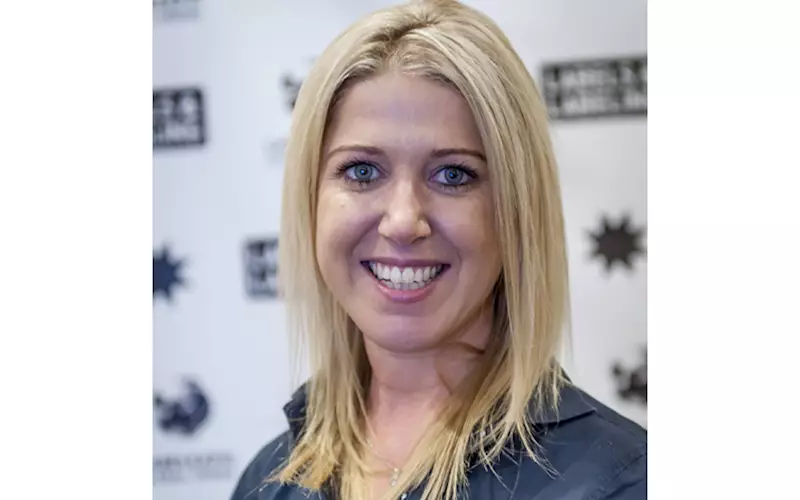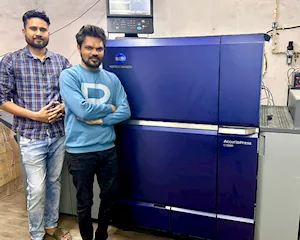In a fast forward mode
Labelexpo India is set to transpire from 22-25 November 2018. Lisa Milburn, managing director for the Labelexpo Global Series at Tarsus tells Noel D’Cunha how the show is getting ready for packaging technology of future
12 Nov 2018 | By Noel D'Cunha
Some big names at the show, this year...
This year’s show promises to be our biggest yet in the region, with over 250 exhibitors – a 25% increase in 2016. Companies taking part include Avery Dennison, Bobst, Esko, HP, Hyden Packaging, Martin Automatic, Monotech, Nilpeter, Omet, RK Label, Xeikon, and Zhejiang Weigang Machinery.
What can the visitors expect?
Many Indian commercial offset printers are now looking to diversify into label and package printing, creating a huge appetite for innovation and technology which we are seeing reflected in the calibre of exhibitors at this year’s Labelexpo India. Machinery and technology on show include Bobst’s M5 printing and converting line, Weigang Machinery’s high speed ZJR-330 flexo printing press, Monotech’s Colornovo full colour UV inkjet label production press, Nilpeter’s new generation FB-Line, Kores’ Endura 2801 high speed label printing device, HB Fuller’s Swift melt technology, Konica Minolta’s AccurioLabel 190, BST Eltromat’s 100% defect detection and web viewing system for narrow web, and Vinsak’s two eight-colour Lombardi Synchroline UV flexo presses.
What’s new from the previous year?
We are hosting an exclusive invite-only Labelexpo India Brand Innovation Day on day one of the show. This fact-finding day, aimed at brand owners, will highlight the latest technologies, how brands can achieve stand-out product presence and feature an onsite tour of key suppliers. Demand for this has been huge and we have numerous brand owners taking part.
We have also been hosting over the last few months a series of half-day forums around India, and also Bangladesh and Sri Lanka for the first time. These events have proved extremely popular, and are designed to give offset printers a taste of the scope and opportunity on offer at Labelexpo India, and networking opportunities with others in the industry. In some areas, such as Bangladesh, it’s the first time an event like this has ever taken place – and the demand was overwhelming!
Both of these initiatives have really helped build huge momentum for this year’s Labelexpo India, so we are very much looking forward to meeting exhibitors and visitors at the show.
What’s Finat Radar’s assessment of the label segment – flexo, digital, hybrid – region-wise?
Finat’s consultancy LPC carried out this year’s Radar report on trends among converters and end users. Findings included a preference for more complex labels, mirroring the fact that most new flexo presses are now built to order. Non-prime labels are increasingly functional or “smart”. Specific sourcing of digital labels is still not a priority for brands operating in the food and beverage sectors, though digital label procurement is forecast to increase substantially in the coming months. Previous editions of the Finat Radar picked up on the growing trend for label converters to diversify into flexible packaging; the 2017 report shows almost one-fifth of the converters surveyed were already producing flexible packaging, a 3% year on year increase. Around one-third of the samples were also printing shrink sleeves.
Digital printing also continues to grow?
Yes, with inkjet taking an increasing market share of 7.9% of the global market (according to LPC figures). This breaks down into 10.5% in Europe and North America, and 6% in Asia-Pacific. Out of the 2,300 digital presses installed in Europe, 71% are currently toner based, and 29% inkjet/hybrid. Around 300 of the digital presses sold in Europe in 2017 were inkjet/hybrid.
Labelexpo has evolved from being a label show to a label and packaging show. Is that because packaging as a segment has a bigger playing field? What is the ratio of the label versus packaging player exhibitors? Doesn’t combining the two sectors send a message that label is ‘only so much’ industry?
Labelexpo remains at core a show about labels. The move to flexible packaging is happening because modern servo-controlled narrow and mid-web flexo presses can print a wide range of unsupported film materials such as shrink sleeves and stand-up pouches as well as pressure-sensitive labels. It is label printers diversifying their businesses to become ‘one-stop-shops’ who are driving this move in Europe and the US, and it will be interesting to see if Labelexpo India shows the same trends.
Can you share some data that shows which are the regions where labels are growing are, and what is driving that growth, which is the applications?
Globally the fastest growing region is Asia-Pacific, driven by India and China. Although growth rates here have slowed, we are still seeing up to 8% growth in all label applications in India and 6% in China, which contrasts with under 2% growth in the developed markets of Western Europe and North America. The biggest pressure-sensitive label application is for VIP/logistics and industrial sectors such as auto and durables, and in prime labels, food and drink, followed by household chemicals, cosmetics and pharma.
Circular economy in packaging, the waste management in labels requires equal look notwithstanding, is the new buzzword.
Initiatives such as the New Plastics Economy Global Commitment are gaining significant momentum, with the support of at least 250 organisations, including many of the world’s largest packaging producers, brands, retailers and recyclers, along with governments and NGOs.
But, governments are also increasingly legislating to stop landfill of packaging waste and this raises the question of how do we develop a circular recycling system, particularly for release liner waste?
The materials suppliers like Avery Dennison and UPM Raflatac are working directly with sustainability-focused brands to set up liner collection and recycling systems. It is possible to de-siliconise glassine waste to recover the raw fibres, and film liners can be recycled directly back into liners. Matrix waste can be pelletised and burned and is a low carbon alternative to fossil fuels. In addition, Avery Dennison is launching ‘switchable’ adhesives which help PS labels release cleanly from PET bottles and from glass, allowing those materials to be recovered without label contamination.
Data and data handling is of growing importance in industrial manufacturing, bringing Packaging 4.0 in production workflow in focus. You engage with brand owners across the world. What are they saying about Packaging 4.0 vis-à-vis preparedness of their suppliers?
It will be interesting to ask this question of the brand owners at Labelexpo India during the Brand Innovation Day event. Currently, we see more interaction between brands and label converters in automating the approval cycle – for example, so everyone is amending a single master file over a secure network and all comments and actions are retained in an edit trail stored in the Cloud. Brands are also demanding just-in-time delivery of labels to fit in with their production requirements, which are increasingly driven by Industry 4.0 systems.
And finally, manpower development in the labels and packaging sectors is an area that needs serious consideration. What are the initiatives that Labelexpo takes to educate the label and packaging converters?
This is an issue that we take very seriously in such a fast-paced industry, and we do this in several ways. Firstly, there’s the Label Academy, our global training programme for the label and package printing industry. It was set up by industry expert Mike Fairley, who founded Labels & Labeling magazine. This was in response to a reduction in the number of dedicated printing colleges, the need to standardise training across the world, and to address the unique training needs of the label industry. We publish a number of books on various topics, which are available to buy. We also make them available at all our Labelexpo events.
Many of our Labelexpo shows also have an educational conference programme, covering a wide range of topics and presented by top speakers. We also offer five-hour expert-led master classes at our larger shows, which provide in-depth technical learning on topics such as shrink sleeves; inks, coatings and varnishes; and MIS and workflow automation.














 See All
See All